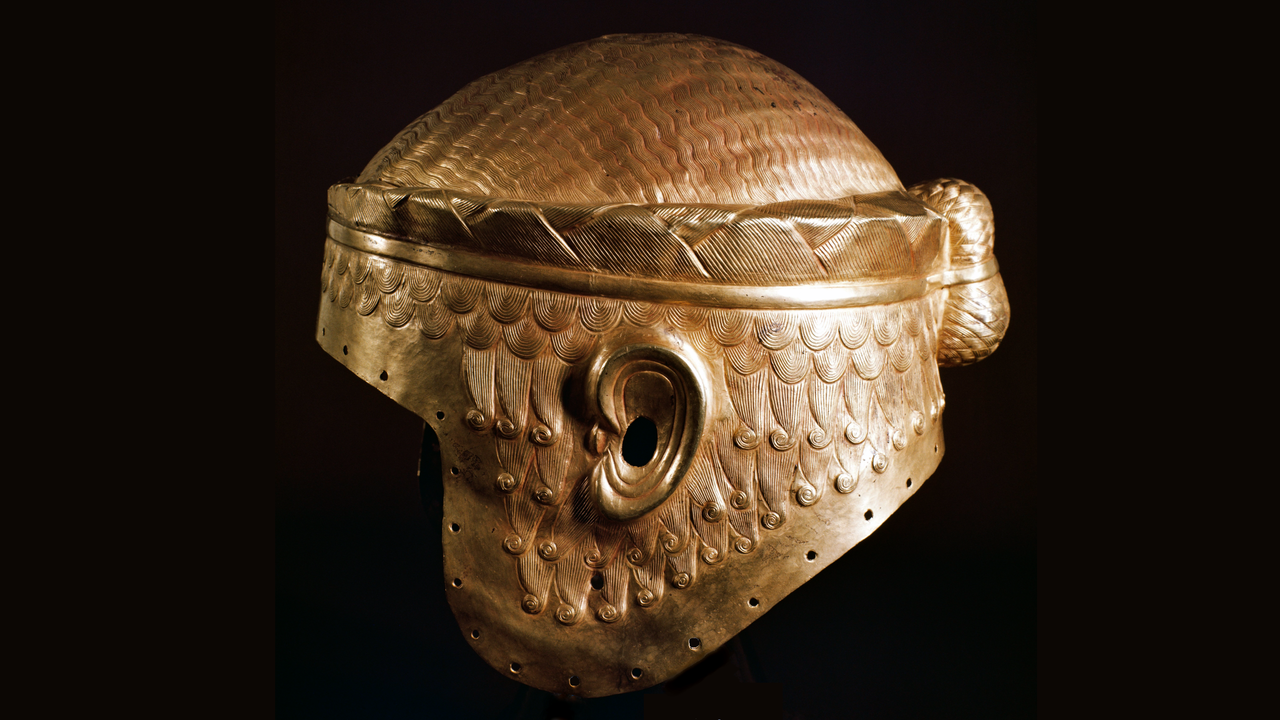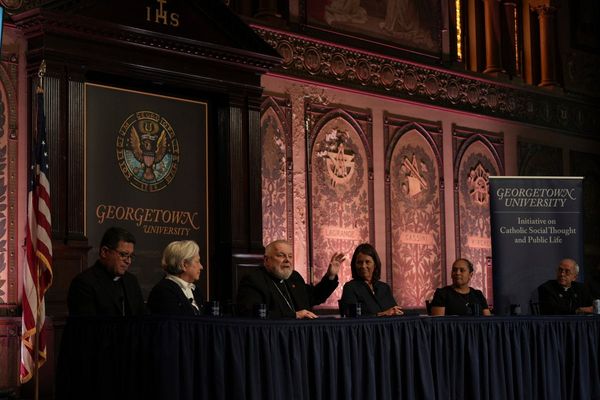
Name: Meskalamdug's Helmet
What it is: A 15-karat gold helmet shaped like a wig
Where it is from: The Royal Cemetery at Ur, in what is now southern Iraq
When it was made: Circa 2600 B.C.
This gold helmet, painstakingly decorated to look like the wavy hairdo and ears of its wearer, was found in 1927 by British archaeologist Sir Leonard Woolley during excavations at Ur, an ancient city in Mesopotamia that is now part of Iraq.
The artifact was recovered from a tomb in the Royal Cemetery along with alabaster vases, gold daggers and golden bowls — one of which listed the name Meskalamdug, meaning "hero of the good land." But since the tomb was not as big or as richly furnished as other royal tombs, Woolley suggested the deceased was probably a prince rather than a king of Ur.
Two copies of the helmet were made within a few years of discovery, one going to the British Museum and one to the Penn Museum. The original helmet, which was hidden before the First Gulf War and protected from looting until it was recovered in late 2003, is at the Iraq Museum in Baghdad.
According to the Penn Museum, the helmet is 8.9 inches (22.7 centimeters) tall and 8.3 inches (21 cm) wide. And according to James Ogden, an early 20th century goldsmith who created the two exact replicas in 1928, the original helmet was made from one sheet of 15-karat gold.
Ogden described the helmet in his personal notes as "life size" and "perhaps a ceremonial headdress." The small holes around the rim were likely used to secure a quilted cloth lining, and Ogden noted that he found traces of it inside.
The hand-beaten gold was modeled and engraved to represent hair that was tied back with a ribbon and pulled into a small bun in the back. The ears had holes so that the wearer could hear through the helmet, and additional holes below the ears were probably for the attachment of a chin-strap.
Meskalamdug's helmet is quite different from the ordinary copper helmets that private soldiers wore, Woolley wrote in a 1928 report on Meskalamdug's tomb. But it is similar to the hairstyles and helmets worn by the Mesopotamian rulers Eannatum and Sargon the Great, also known as Sargon of Akkad, in the 25th and 24th centuries B.C. Meskalamdug's helmet is one of the oldest ever found.
While there is evidence from the Royal Cemetery that a man named Meskalamdug was a Sumerian king, this particular Meskalamdug was not identified as a king by the artifacts in his grave. The helmet may therefore have belonged to the eponymous son or grandson of King Meskalamdug, part of Ur's First Dynasty, whose second wife was Queen Puabi.







